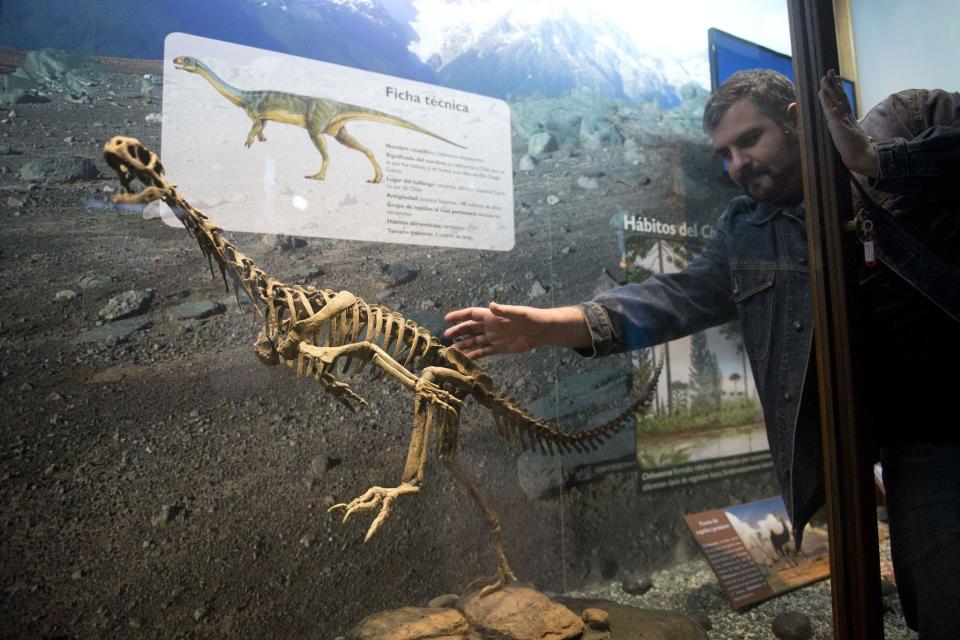Chilesaurus: Bizarre, vegetarian 'frankenstein' might be one of the most important dinosaurs ever

A bizarre “Frankenstein” dinosaur that looked like other dinosaurs stitched together could be one of the most important ever found.
The beast looks like a raptor but was actually a vegetarian, according to scientists. And that is important because it could bridge a gap that was previously a mystery to scientists.
The chilesaurus was found in 2015 and named for being found in southern Chile. Initially, scientists had thought it was a vegetarian member of the therapods, the group of meat eaters that includes lookalikes like the Tyrannosaurus rex and Velociraptor.
But even finding that classification was difficult. The dinosaur has a strange set of physical characteristics that look like they had emerged from different places: its head looks like a carnivore’s, for instance, but its teeth are flat and appeared to be made for grinding up plants.
And now scientists have decided that it in fact belongs to its own group, the ornithischia, and that it was a relative of famous plant-eating dinosaurs like the Stegosaurus and Iguanadon. And that fills in an important missing link between two of the major dinosaur groups, and helps scientists understand how the two might have split.
“Chilesaurus almost looks like it was stitched together from different animals, which is why it baffled everybody,” said Matthew Baron, one of the authors of a new paper classifying the dinosaur.
But that strange mix was exactly what made it so important, according to Paul Barrett from the Natural History Museum, who worked on the research.
“Chilesaurus is one of the most puzzling and intriguing dinosaurs ever discovered,” he said. “Its weird mix of features places it in a key position in dinosaur evolution and helps to show how some of the really big splits between the major groups might have come about.”
To place the Chilesaurus, scientists analysed more than 450 different characteristics of early dinosaurs and compared them with the specimen. That allowed them to match it with other species and find its place in the family tree.
“Before this, there were no transitional specimens – we didn’t know what order these characteristics evolved in,” said Baron. “This shows that in bird-hipped dinosaurs, the gut evolved first, and the jaws evolved later – it fills the gap quite nicely.”
For that to happen, the dinosaurs lineage appears to have split apart. The same group of scientists has already argued that the dinosaur family groups need to be rearranged and re-named, because new discoveries appear to change our understanding of the history of dinosaurs.
The new research suggests that the family tree might be even more complicated than previously thought.
“There was a split in the dinosaur family tree, and the two branches took different evolutionary directions,” said Baron. “This seems to have happened because of change in diet for Chilesaurus.”
“It seems it became more advantageous for some of the meat eating dinosaurs to start eating plants, possibly even out of necessity.”

 Yahoo News
Yahoo News 